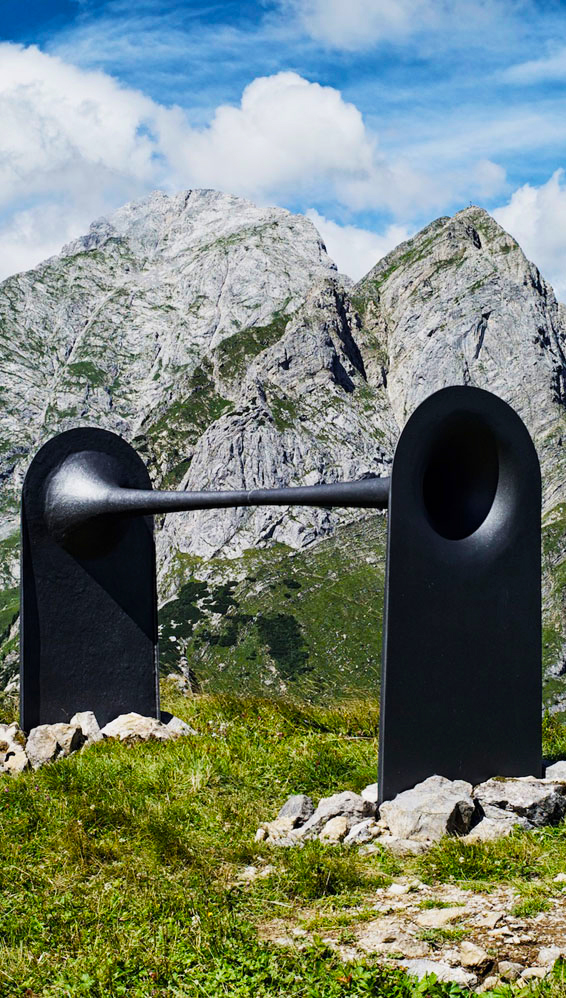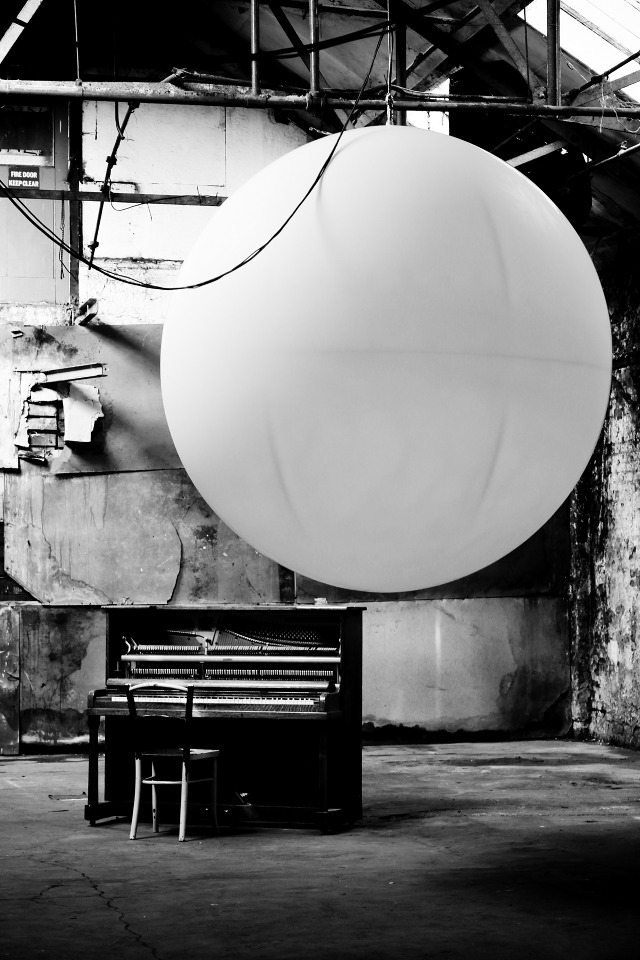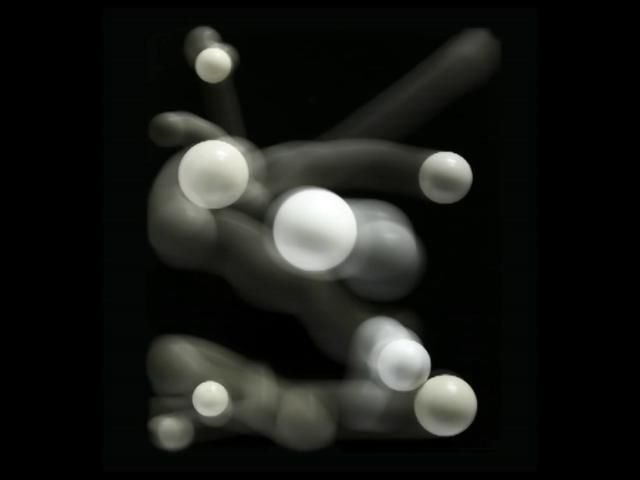
Michele Spanghero
Dià
Dià (from greek διά, through) is a sculpture installed on a piece of no man’s land on the top of mount Pal Piccolo on the border between Italy and Austria, where World War I was fought. The double-trumpet shaped sculpture symbolically connects, both visually and acoustically, the first lines’ trenches. Two arched doors, that refer to the entrance of the shelters and trenches, turn into cavities to listen or observe the surrounding landscape. The work, conceived as a symbolic link between the two fronts, combines the dimensions of silence and sound: dià is indeed a device that invites audience to interact with the two cavities as a megaphone or a peephole, to start an intimate dialogue through the sculpture.





